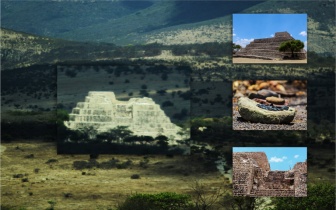Cañada de la Virgen: a protected natural area [Video]
News Category: News, Community News, and Video
-
Cañada de la Virgen is one of the archaeological zones of Guanajuato that includes four architectural complexes and was a place for the observation of astronomical phenomena, in addition to that, they were dedicated to planting so they had an Amanalli which is a pond of water that was vital for the area.
To the northwest of Guanajuato is the Cañada de la Virgen, in the municipality of San Miguel de Allende, which was part of the archaeological zone of the Laja River, possibly inhabited by Otomí-Hñahñu people.
The archaeological zone is a pre-Hispanic settlement located in the northern border of Mesoamerica, whose main monuments were used to make observations of the sky, it is said that it could also have been a school where many cultures came to study astrology and that is the reason for the diversity of pieces found in the place.
Its urban layout reflects the cosmic cycles to which the life of groups of farmers was linked, who also practiced gathering and hunting in the surrounding semi-desert regions and exchanged objects used in ritual activities with other Mesoamerican regions.
Among the characteristics that identify this group is the presence of architectural called sunken patios with pyramidal base, in the place have been found pieces like metates, and pieces of pots that some are still in an area as part of the same environment, for the same reason it is not allowed to enter with bags to the place.
In complex A or house of the Thirteen Heavens is the main building of the archaeological zone, there is the sunken patio delimited by lateral platforms and the pyramidal base to the west, in the superior part of this base is an area called Red Temple that has a mural painting with horizontal, red, black and ocher stripes.
In this complex 13 funerary burials have been found that have helped to understand different cultural practices such as cranial deformation, inhumations, ancestral veneration and rituals associated with the founding of the site.
This site was mainly occupied for the observation and recording of astronomical phenomena whose axis of symmetry crosses the structure of complex A in two halves; so far, 19 burials have been located throughout the area along with their offerings.
Complex B is made up of four constructive bodies and has a pyramidal base to the southwest, there is a room with rainwater drainage that has been assigned the name of Temazcal, since it seems that this space fulfilled this ritual function.
There is a complex where the flora of the place that they used in their time is preserved, such as the “soyate” that was used to wrap the deceased to be buried, the “sangregado” was where the red paint was obtained, among others.
In the place there is also a wetland where the water of the patios of the constructions or sunken patios arrives, same that serves for the irrigation of the plants and trees that are in the place.
Complex D or the house of the wind is a circular structure on which rests a quadrangular room and it was here where a burial was found more called 14 associated to the second constructive stage and a possible event of ritual sacrifice distinguishable by the amount of pottery “killed” symbolically.
The whole place is surrounded by a ravine where at that time passed a lot of water, and that helped as a natural barrier, is in an area of 16 hectares to reach it must be walking and passing through the causeway or stone road.
This reserve is protected by the National Institute of Anthropology and History, as well as the state government who are in charge of giving guided tours, you can not access if you do not pass to the office, since the area surrounding the place are private ranches that can only be accessed by official vehicle.
There is a recovery fee of 70 pesos and the tour lasts two and a half hours, so if you would like to go, either dial the place to reserve a place and date or arrive early to get one of the guided tours that are available, they start at 10 am from Tuesday to Sunday.


Leave a Reply